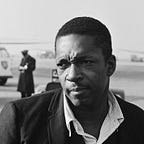A MYRIAD OF FORM(S)
More Syllabic Poetry
Monthly Prompt №5.2: August — introducing the cinquain
Background
The modern form, known as American Cinquain inspired by Japanese haiku and tanka, is akin in spirit to that of the Imagists. In her 1915 collection titled Verse, published a year after her death, Adelaide Crapsey included 28 cinquains. Crapsey’s American Cinquain form developed in two stages. The first, fundamental form is a stanza of five lines of accentual verse, in which the lines comprise, in order, 1, 2, 3, 4, and 1 stresses. Then, Crapsey decided to make the criterion a stanza of five lines of accentual-syllabic verse, in which the lines comprise, in order, 1, 2, 3, 4, and 1 stresses and 2, 4, 6, 8, and 2 syllables. Iambic feet were meant to be the standard for the cinquain, which made the dual criteria match perfectly. Some resource materials define classic cinquains as solely iambic, but that is not necessarily so. In contrast to the Eastern forms upon which she based them, Crapsey always titled her cinquains, effectively utilizing the title as a sixth line. Crapsey’s cinquain depends on strict structure and intense physical imagery to communicate a mood or feeling.
The form is illustrated by Crapsey’s “November Night”:
Listen…
With faint dry sound,
Like…
